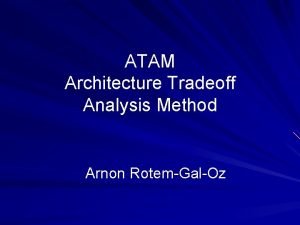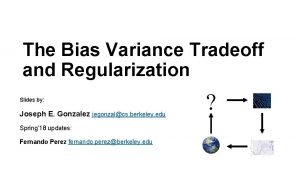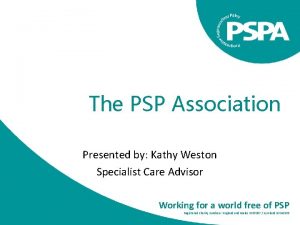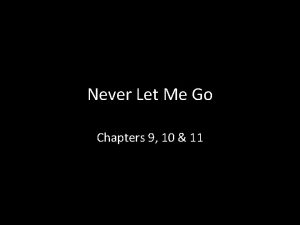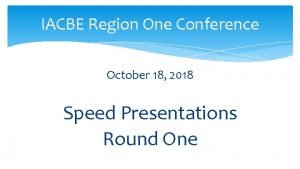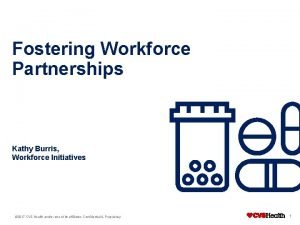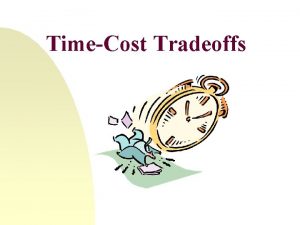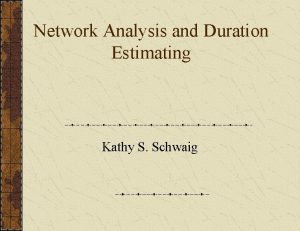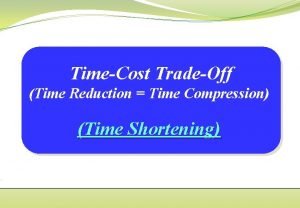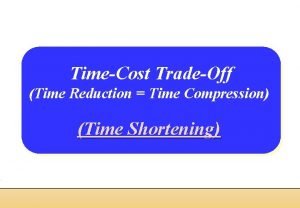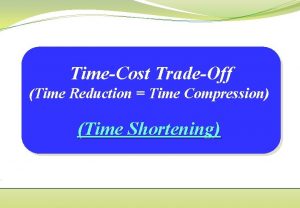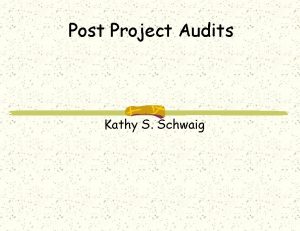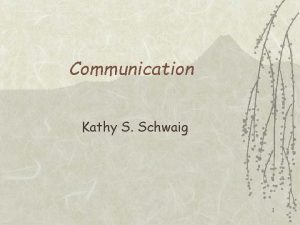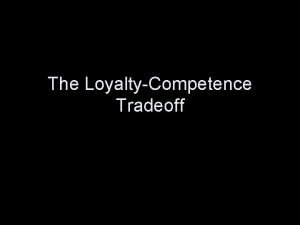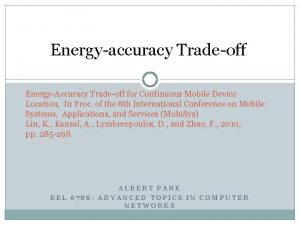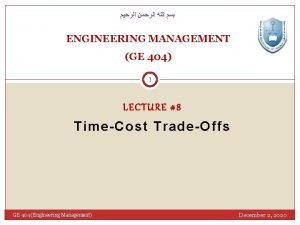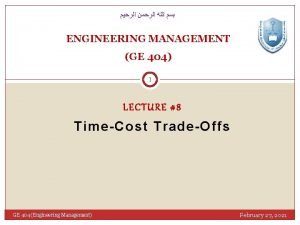TimeCost Tradeoff Analysis Kathy S Schwaig A Roadmap














- Slides: 14

Time/Cost Trade-off Analysis Kathy S. Schwaig

A Roadmap of the Project Planning Process Develop project charter Establish work breakdown structure Analyze sequencing relationships Estimate “normal” activity durations Perform network calculations Validate/revise initial schedule Perform time-cost tradeoff analysis Load resources to activities Resolve any resource/workload imbalances Develop budget and cash flow plan based on analysis of direct and indirect costs

Validating the Schedule Once the project network has been drawn and analyzed, you should check to make sure the results make sense. . . this is called validation Is the project duration reasonable? Is the critical path where you would expect it to be? Are you missing any activities? Or precedence relationships? If you are using project management software, has the data been entered correctly?

Revising the Schedule The schedule may be revised for many reasons To correct errors To reflect changes in assumptions To reflect reductions in project scope (i. e. , elimination of activities) To reflect changes in the project calendar In response to changes in the approach taken to complete an activity In response to changes in precedence relationships

Time/Cost Trade-off Analysis Time/cost trade-off analysis is the compression of the project schedule to achieve a more favorable outcome in terms of project duration, cost, and projected revenues Objectives of time/cost trade-off analysis Minimize total project costs Compress project to an acceptable duration Done by selectively crashing specific activities to shorten project duration

Time/Cost Trade-off Analysis You might think that total project costs will increase when we begin to crash activities But, total project costs consist of both indirect (project-based) costs (PBC) and activity-based costs (ABC) ABC goes up when we crash activities in an effort to finish the project early But, PBC (the indirect costs) goes down if we finish the project early

Which Activities are the Best Candidates for Crashing? Any activity that is on the critical path Activities with relatively long durations Bottleneck activities (that appear on multiple critical paths) Activities that relatively low cost to crash Activities that are not likely to cause quality problems if crashed Activities that occur relatively early in the schedule and are labor intensive

Steps for Performing Time/Cost Trade-off Analysis 1. Estimate project-based (indirect) cost per unit time 2. Identify critical activities that are good candidates for crashing 3. Determine activity-based (direct) cost of crashing selected activities vs. indirect cost savings 4. Select activities to be crashed 5. Recalculate the forward pass and check for changes in critical path

Potential Problems with Crashing Reduced flexibility and less margin for error increased risk of failure to complete project on time Raises potential for poor quality Increases potential for staff burnout, stress, and turnover (from what Yourdon calls Death March projects) Raises activity-based costs May negatively affect other projects Creates unrealistic expectations for future projects

Crashing Example A N=7, $50, 000 C=5, $62, 000 B N=9, $80, 000 C=6, $110, 000 Start Finish C N=10, $40, 000 C=9, $45, 000 D N=8, $30, 000 C=6, $42, 000

Crashing Example Cont’d Costs to accelerate are: Activity A, $6, 000/wk Activity B, $10, 000/wk Activity C, $5, 000/wk Activity D, $6, 000/wk Makes sense to crash only those activities on the critical path(s) with the lowest acceleration cost per time period

Crashing Example Cont’d Step 1: Crash C by 1 week A N=7, $50, 000 C=5, $62, 000 B N=9, $80, 000 C=6, $110, 000 Start Finish C N=10, $40, 000 C=9, $45, 000 Path C-D = 9 + 8 = 17 D N=8, $30, 000 C=6, $42, 000

Crashing Example Cont’d Step 1: Crash C by 1 week Step 2: Crash D by 1 week A N=7, $50, 000 C=5, $62, 000 B N=9, $80, 000 C=6, $110, 000 Start Finish C N=10, $40, 000 C=9, $45, 000 Path C-D = 9 + 7 = 16 D N=8, $30, 000 C=6, $42, 000

Crashing Example Cont’d Step 1: Crash C by 1 week Step 2: Crash D by 1 week Step 3: Crash D by 1 week AND crash A by 1 week. Why? A N=7, $50, 000 C=5, $62, 000 B N=9, $80, 000 C=6, $110, 000 Start Finish C N=10, $40, 000 C=9, $45, 000 D N=8, $30, 000 C=6, $42, 000
